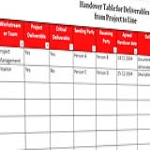Business Analysis Plan Template

Guardar, completar los espacios en blanco, imprimir, listo!
How to make a business analysis? Download this complete and easy to use Business Analysis Plan template to summarize your business and explain it to your customers, investors and other stakeholders.

Formatos de archivo premium disponibles:
.docx- Este documento ha sido certificado por un profesionall
- 100% personalizable
Business Negocio Projectmanagement Gestión de proyectos business plan plan de negocios management administración project proyecto business management administración de Empresas strategy estrategia business analysis plan plan de analisis de negocios business analysis plan example Ejemplo de plan de análisis de negocios sample business analysis plan plan de análisis de negocios de muestra
How to make a basic business analysis plan? What is the best Business Analysis Plan Template for you? Get this template now which provides a structured framework for gathering requirements, defining solutions, and validating results. It allows you to quickly capture the necessary details and create a concise report that can be used to inform stakeholders. Download this ready-to-use strategic business analysis plan now!
A Business Analysis Plan (BAP) is a critical document in the field of business analysis, which outlines the approach and methodology that will be used to analyze and solve business problems or to implement changes within an organization. It serves as a roadmap for conducting effective business analysis activities.
Here are the key components and purposes of a Business Analysis Plan:
- Purpose and Scope: The BAP starts by clearly defining the purpose of the analysis and the scope of the project. It answers questions such as: What problem are we trying to solve? What are the goals and objectives of the analysis?
- Stakeholder Identification: It identifies and lists all relevant stakeholders - individuals, groups, or departments within the organization that will be affected by the analysis or change. Understanding their needs and concerns is crucial for successful analysis.
- Business Objectives: The plan outlines the specific business objectives that need to be achieved through the analysis. These objectives should be aligned with the overall strategic goals of the organization.
- Business Analysis Approach: This section describes the methodology or approach that will be used to conduct the analysis. It may include techniques, tools, and frameworks that will be applied. Common methodologies include SWOT analysis, PESTEL analysis, and various requirements-gathering techniques.
- Data Collection and Analysis: The plan outlines how data will be collected, what data sources will be used, and the methods for analyzing the data. This may involve surveys, interviews, data mining, or other research techniques.
- Requirements Gathering: If the analysis is related to a project or system, the plan may include details on how requirements will be gathered and documented. This can involve user stories, use cases, or functional requirements.
- Risk Assessment: Identify potential risks and constraints that could impact the analysis process. This allows for proactive risk management.
- Timeline and Milestones: A Business Analysis Plan typically includes a timeline with key milestones and deadlines. This helps in tracking progress and ensuring that the analysis stays on schedule.
- Resource Allocation: Define the resources needed for the analysis, such as personnel, technology, and budget. This ensures that the necessary resources are available throughout the project.
- Communication Plan: Describe how communication will be managed among stakeholders. This includes regular reporting, status updates, and channels of communication.
- Approval and Sign-Off: Specify the process for obtaining approval and sign-off from key stakeholders, ensuring that everyone is in agreement with the analysis plan.
- Appendices: Any supporting documents or references that are relevant to the analysis plan can be included in this section.
A well-structured Business Analysis Plan is essential for ensuring that business analysis activities are conducted systematically, efficiently, and in alignment with organizational objectives. It provides a clear roadmap for the analysis process, helping analysts and stakeholders stay on track and achieve their goals.
DESCARGO DE RESPONSABILIDAD
Nada en este sitio se considerará asesoramiento legal y no se establece una relación abogado-cliente.
Deja una respuesta. Si tiene preguntas o comentarios, puede colocarlos a continuación.

